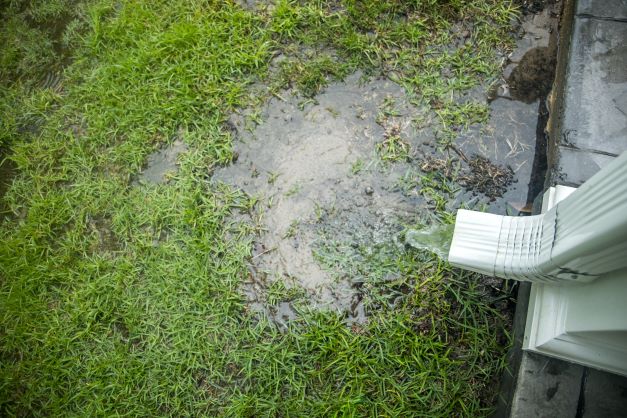Today’s architectural designs and infrastructure increase the rate of water pollution in large water bodies. During a rainy season, water will flow over parking lots, driveways, and lawns. As this happens, the water collects various chemical compounds on these surfaces. These chemicals ultimately end up in lakes or oceans. As a result, the ecosystem in these water bodies changes over time.
Therefore, homeowners need to ensure that their properties have less stormwater runoff. There are several steps you can take to reduce this. Some places have expert companies you can contact to build a stormwater pit on your property. This pit can help curb stormwater runoff from your property. Thus, it helps reduce water pollution downstream. However, it would also help to implement some of the below solutions to reduce stormwater runoff from your home.
Plant Trees Around Your Property
Trees provide help to improve your property’s scenery. However, they’re also vital in reducing the amount of stormwater runoff. The trees’ branches and leaves provide a canopy over the ground. This canopy helps lessen the intensity of rainwater falling to the ground. Thus, the soil can absorb more water as the rain falls.
The roots also help absorb the water that seeps through to the water table. Therefore, it’d be best to have more trees on your property. If there are existing ones, it’s better to take care of them as they can be a native variety better suited for your location.
Avoid Or Reduce Impermeable Surfaces Around Your Property
In a natural environment, precipitation that falls on the ground seeps through the surface towards the water table. As this precipitation seeps through the soil, it gets filtered, and plant roots absorb most of it. The soil filtration helps purify the water.
However, most places in the current environment are characterized by non-porous surfaces. These surfaces can include asphalt or concrete pavements and driveways. As a result, when it rains, you’ll experience extensive runoffs.
To reduce the amount of stormwater runoff, you can replace these surfaces with porous materials. For instance, you can use paving stones or gravel instead of concrete on your driveway. You can also use porous asphalt or interlocking pavers. These materials allow water to soak to the ground below, thus reducing the amount of runoff from your property. In addition, they can help reduce chemicals seeping into the ground.
One of the common tricks you can use on your driveway is to pave the surface for the tire touch. This allows you to put mulch or plant low-growing grass in the middle. Alternatively, you can position French drains at the lower part of your driveway. These drains can also be on other parts of your property.

Use Downspout Redirects Or Disconnections
Traditionally, downspouts direct water into an underground pipe or a storm drain system. Other downspouts can channel water onto an impervious surface, which then flows onto the streets. The water can come from the roof of your home. Drain disconnection involves redirecting the water from flowing onto the non-porous surface or the storm drain. Thus, you create a disconnection between where the water flows from and where it should go.
You can redirect the water to a rain garden or a French drain in your landscape. Thus, allowing water to seep into the ground slowly. If you have a rain barrel on your property, you can also redirect the water into it.
If your property is sloppy and you still want to use the downspout disconnection, you can install berms and swales. The berms can help slow the flow of the water. On the other hand, vegetated swales can help you direct water to your rain gardens.
Think About A Rain Garden
Sometimes, you might not manage to plant trees. Therefore, it’d help if you opted for a rain garden instead. In brief, a rain garden is an area in your landscape with a depression where you can plant grass or other native shrubs. This depression can collect water from your roof or other places on your property. You can also have a rain garden at the end of a slope.
As the water isn’t flowing, it allows the soil and the plants to absorb it slowly. This method can also be cost-effective as the plants improve your landscaping visual appeal. In some places, you can use bioretention gardens. These gardens use amended soils and include drainage systems. However, you need to check if there are other underground installations before creating a bioretention garden.
Conclusion
As construction grows, the number of impervious surfaces also grows. This growth increases the amount of stormwater runoff. Besides causing flash floods, they can also affect the ecosystem of the water bodies downstream. The above solutions can help reduce stormwater runoff on your property and assist in environmental preservation.





More Stories
5 Tips For Getting A Great Roofing Contractor In Montco
The Cost of Canadian Choice Windows & Doors in Richmond Hill, Ontario
How To Keep Grass Green In Winter 2022